1990s
Woops!
A comedy about life after nuclear Armageddon.Fox cancelled the series in late November. At the time, it was ranked 105th out of 108 weekly shows [54]. Only 10 of the 13 produced episodes were aired; the last was broadcast on December 6th.
Posted By: Paul - Wed Mar 01, 2023 -
Comments (5)
Category: Humor, Ineptness, Crudity, Talentlessness, Kitsch, and Bad Art, Television, War, Atomic Power and Other Nuclear Matters, 1990s
I Dream of Madonna
Thirty years ago, Madonna seemed to be invading the psychic spaces of sleepers. The phenomenon was recorded in I DREAM OF MADONNA, which may be read here, at the Internet Archive.One wonders if today those dreams might tend towards the disturbing.
Read a contemporary review here.
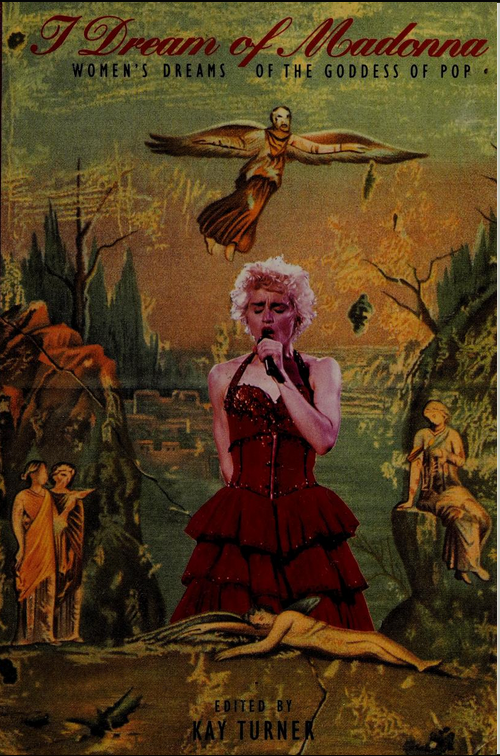
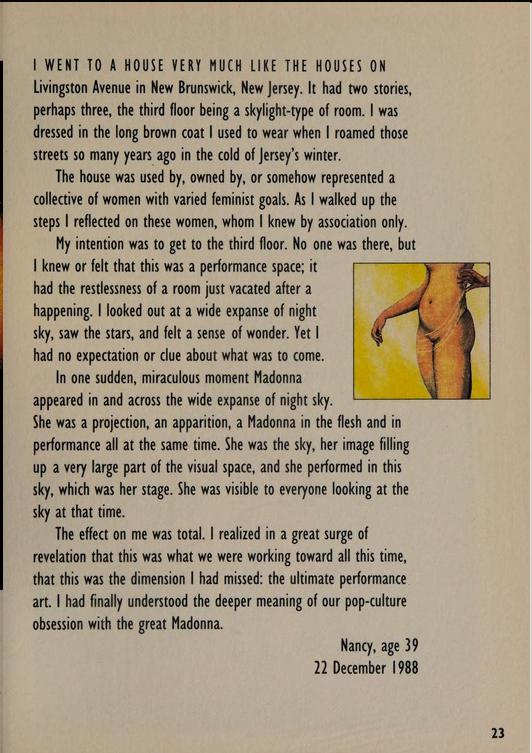
Posted By: Paul - Mon Feb 20, 2023 -
Comments (0)
Category: Celebrities, Dreams and Nightmares, Music, Books, 1990s
Brief Intro to PRESTEL
This kind of tech will never catch on!
Posted By: Paul - Sat Feb 04, 2023 -
Comments (2)
Category: PSA’s, Technology, 1990s, United Kingdom
Shoes with Hinged Soles
There must be a good reason why, for millennia now, all shoes have come with unibody-construction soles. But Robert M. Lyden thought differently.Full patent here.
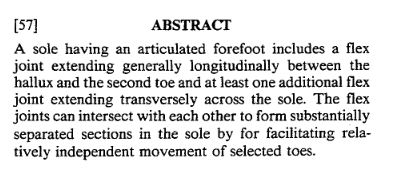
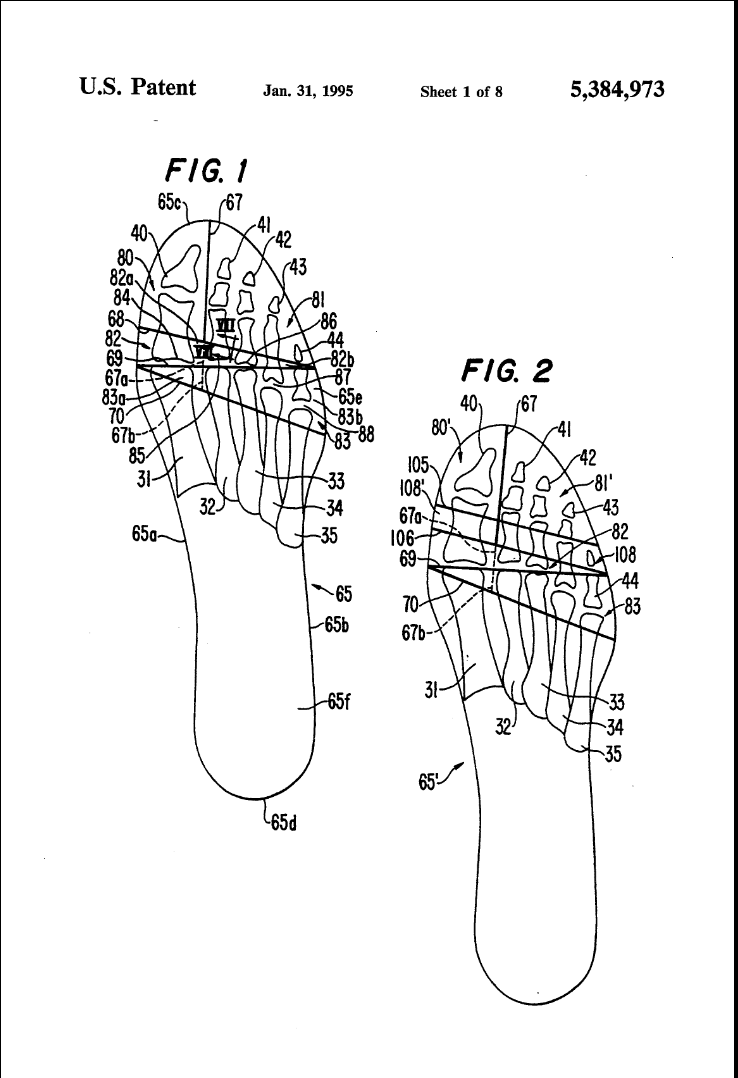
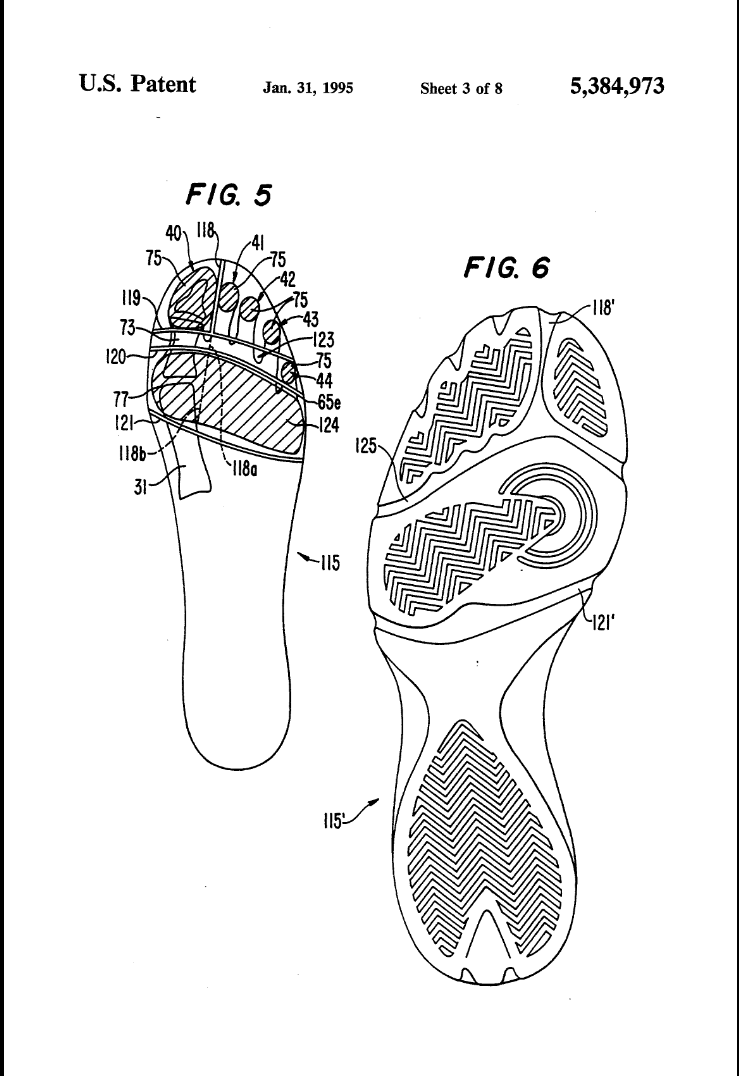
Posted By: Paul - Tue Jan 17, 2023 -
Comments (4)
Category: Body, Inventions, Patents, Shoes, 1990s
Survival on Mayonnaise Alone
Never mind that Eiichi Urata managed to survive for 15 days on mayonnaise alone. What seems stranger to me is that he decided to climb a mountain and took only two jumbo squeeze-tubes of mayonnaise as his food.
Tampa Bay Times - May 27, 1999
Posted By: Alex - Fri Sep 23, 2022 -
Comments (3)
Category: Mayonnaise, 1990s
The Most Unwanted Song
Wikipedia entry.
Posted By: Paul - Wed Sep 21, 2022 -
Comments (2)
Category: Music, 1990s, Pranks, Cacophony, Dissonance, White Noise and Other Sonic Assaults
Inflatable Woman’s Bathing Suit Top
We've all seen those famous vintage ads that show inflatable bras.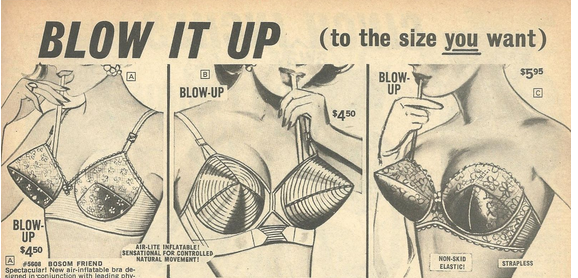
But I had not realized that the gimmick had been applied also to bikinis. I cannot find any such currently for sale, however, which seems to show the idea was...a bust!
Source of article: The Paducah Sun (Paducah, Kentucky) 30 Jul 1992, Thu Page 11
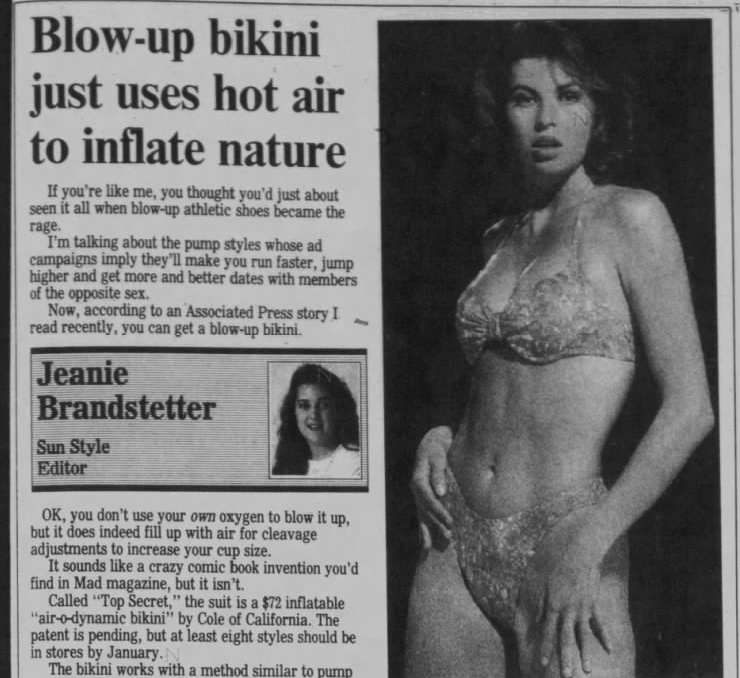
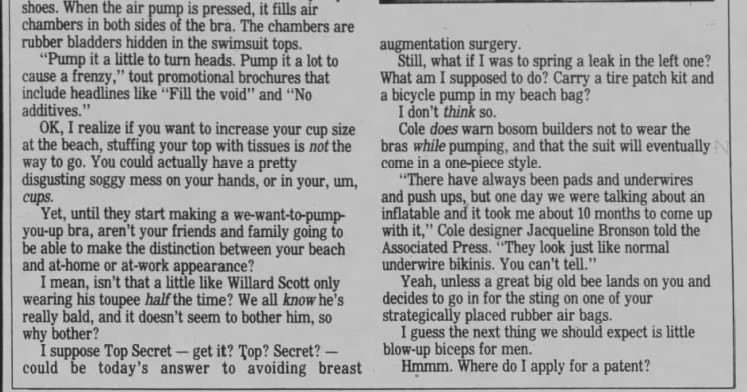
Posted By: Paul - Tue Sep 20, 2022 -
Comments (9)
Category: Fashion, Hoaxes and Imposters and Imitators, Oceans and Maritime Pursuits, 1990s
Harley-Davidson Perfume
Classic business failure: "Hot Road," an eau de toilette released by Harley-Davidson in the mid-1990s and quietly discontinued a year or two later. It wasn't exactly an "on brand" product.More info: Milwaukee Magazine
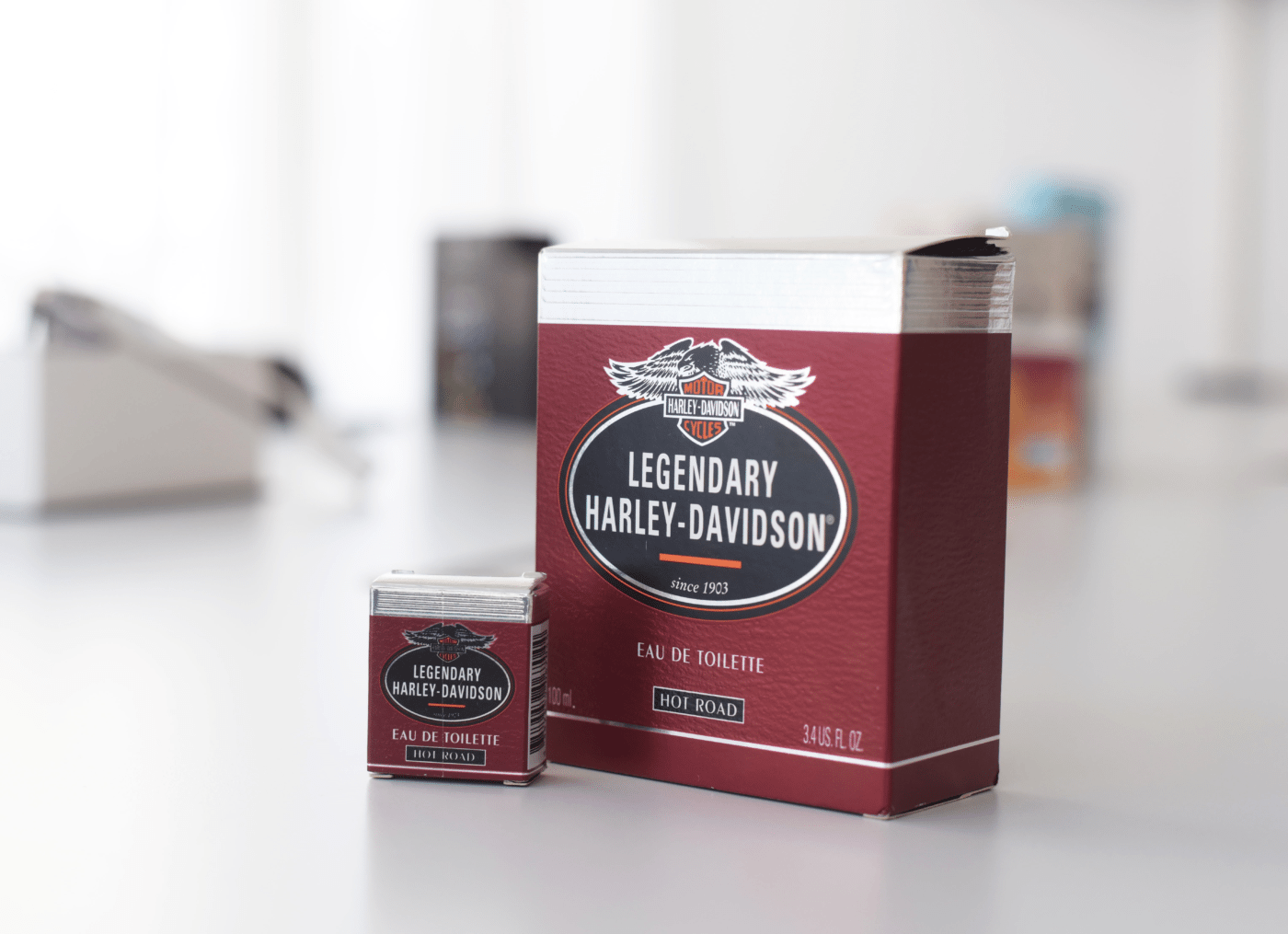
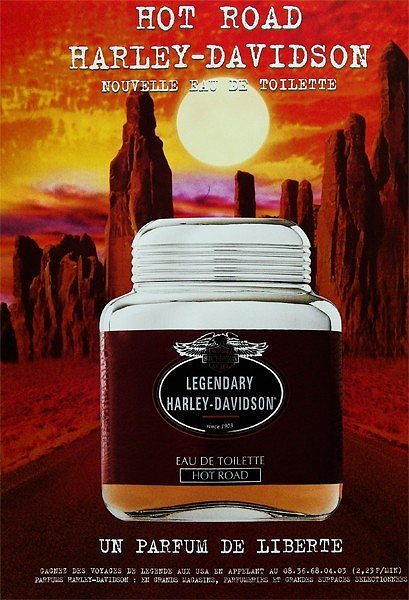
image source: parfumo.net
Posted By: Alex - Sun Sep 18, 2022 -
Comments (0)
Category: Business, Products, Success & Failure, 1990s, Perfume and Cologne and Other Scents
Six drown trying to save chicken
Actually, only one of them jumped into the well trying to save a chicken. The others were trying to save humans. But still, it was a mass tragedy apparently started by an attempt to save a chicken.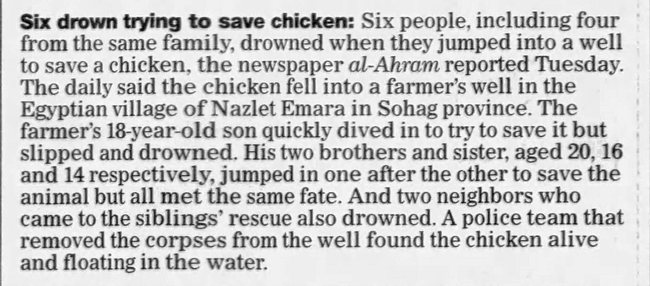
Edmonton Journal - Aug 2, 1995
Posted By: Alex - Mon Apr 04, 2022 -
Comments (1)
Category: Animals, Death, 1990s
Self-Witness
1979: Thomas Martin, an assistant manager at a Jack in the Box restaurant, told police he was robbed of $307 while closing up the store. Police asked him to describe the robber. He described himself. He later confessed to taking the money from the store.I wonder if this sketch is preserved somewhere in the archives of the Oroville, CA police department.

Kenosha News - Mar 9, 1979
Posted By: Alex - Thu Mar 03, 2022 -
Comments (1)
Category: Stupid Criminals, 1990s

| Who We Are |
|---|
| Alex Boese Alex is the creator and curator of the Museum of Hoaxes. He's also the author of various weird, non-fiction, science-themed books such as Elephants on Acid and Psychedelic Apes. Paul Di Filippo Paul has been paid to put weird ideas into fictional form for over thirty years, in his career as a noted science fiction writer. He has recently begun blogging on many curious topics with three fellow writers at The Inferior 4+1. Contact Us |




